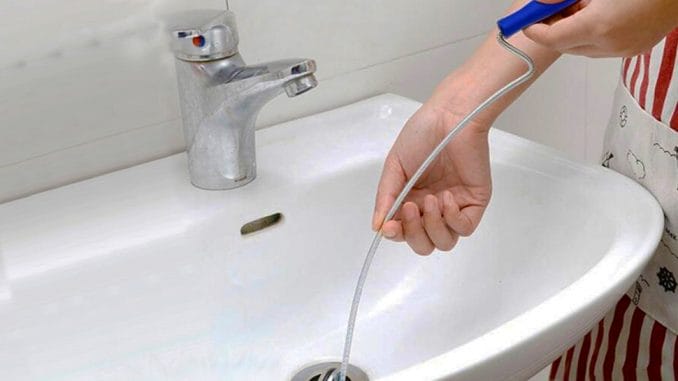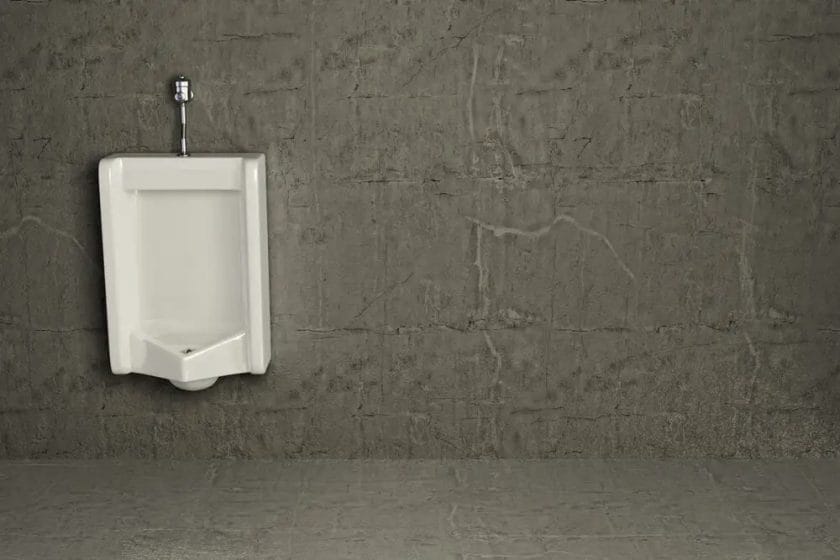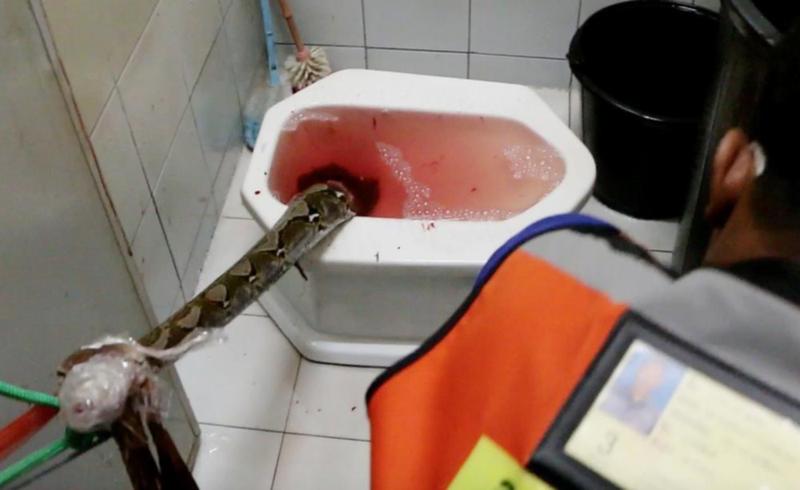If you’re facing a clogged urinal, knowing how to snake it can be a game-changer. A urinal snake, also known as a drain snake or auger, is a handy tool that can effectively clear blockages and restore proper water flow. By inserting the snake into the drain and turning the handle, you can break up and remove any obstructions, such as buildup or debris, that may be causing the clog. With a little bit of patience and the right technique, you can easily snake a urinal and keep it functioning smoothly.

Essential Tools and Materials for Snaking a Urinal
When it comes to unclogging a urinal, having the right tools and materials is essential to get the job done efficiently and effectively. Here are some of the must-have items you’ll need:
1. Urinal Snake
A urinal snake, also known as a drain snake or plumber’s snake, is a flexible tool designed to reach deep into the urinal drain to remove clogs. It typically consists of a long, coiled metal wire with a handle on one end. Make sure to choose a snake with a length that can reach the clog in your urinal.
2. Gloves
Wearing gloves is important for both hygiene and safety reasons. Choose a pair of sturdy gloves made of a material that provides good grip, such as latex or nitrile. Gloves will protect your hands from any potential bacteria or chemicals that may be present in the urinal.
3. Safety Goggles
When snaking a urinal, there is a possibility of splashing or spraying water and debris. Protect your eyes by wearing safety goggles to prevent any harm or irritation. Safety goggles should fit snugly and provide clear visibility.
4. Plunger
A plunger can be a helpful tool in unclogging a urinal if the blockage is not too severe. Choose a plunger with a flat rubber cup that can create a strong vacuum seal against the urinal drain. Use the plunger in conjunction with the snake to dislodge and remove the clog.
5. Bucket
Having a bucket nearby is useful for collecting any water or debris that may come out during the unclogging process. It helps to keep the area clean and prevents any mess from spreading. Make sure the bucket is large enough to hold a significant amount of water.
6. Cleaning Solution
After successfully snaking the urinal and removing the clog, it’s important to clean and sanitize the urinal thoroughly. Use a urinal cleaning solution or a mixture of water and vinegar to disinfect the urinal and eliminate any lingering odors.
7. Towels or Rags
Keep some towels or rags handy to wipe up any spills or to dry the urinal after cleaning. This helps to maintain cleanliness and prevent slip hazards.
8. Step Stool
If the urinal is located higher up on the wall, a step stool or ladder may be necessary to reach the drain. Ensure the step stool is sturdy and provides a stable platform for you to work on.
With these essential tools and materials on hand, you’ll be equipped to tackle any urinal clog with confidence. Remember to follow safety precautions and proper procedures when snaking a urinal to avoid any damage or injury.

Step-by-Step Guide to Snake a Urinal
When it comes to maintaining the plumbing in a commercial or public restroom, one common issue that can occur is a clogged urinal. A clogged urinal can lead to unpleasant odors, unsanitary conditions, and inconvenience for users. In such cases, snaking the urinal can be an effective solution to clear the blockage and restore proper functioning. Follow this step-by-step guide to snake a urinal:
1. Gather the necessary tools
Before you begin, make sure you have all the tools required for the job. You will need:
- A urinal snake or drain auger
- Gloves
- Protective eyewear
- Bucket or container to catch any water or debris
2. Prepare the area
Ensure the area around the urinal is clear and safe to work in. Remove any objects or materials that may obstruct your access to the urinal.
3. Put on protective gear
Prioritize your safety by putting on gloves and protective eyewear. This will protect your hands and eyes from any potential splashes or contact with harmful substances.
4. Insert the urinal snake
Take the urinal snake or drain auger and carefully insert it into the urinal drain. Push the snake slowly and steadily into the drain, applying gentle pressure to navigate through any clogs or blockages.
5. Rotate and maneuver the snake
As you insert the snake, rotate and maneuver it to break up the clog. Use the handle or crank to turn the snake in a clockwise motion. This will help the snake maneuver through the pipes and dislodge any debris causing the blockage.
6. Continue snaking until clear
Keep advancing the snake into the drain while rotating and maneuvering it. It may take several attempts to fully clear the blockage. Be patient and persistent, and avoid using excessive force that could damage the plumbing.
7. Remove the snake
Once you feel the blockage has been cleared, slowly retract the snake from the urinal drain. Pay attention to any resistance or signs of further obstruction.
8. Test the urinal
After removing the snake, test the urinal by flushing it with water. Ensure that the water flows smoothly and drains properly. If the urinal still appears to be clogged, repeat the snaking process or consider seeking professional assistance.
In summary, snaking a urinal can be a practical way to clear blockages and restore proper functionality. By following this step-by-step guide and taking the necessary precautions, you can effectively tackle a clogged urinal and maintain a clean and hygienic restroom environment.

Tips and Tricks to Avoid Clogging Urinals
Urinals are an essential fixture in public restrooms and are designed to provide convenience and efficiency. However, clogging can be a common problem that disrupts the functionality of urinals and causes inconvenience for users. To prevent this issue, here are some tips and tricks that can help you avoid clogging urinals:
1. Proper Use of Toilet Paper
One of the leading causes of urinal clogs is the inappropriate disposal of toilet paper. It is essential to educate users on the correct way to discard toilet paper in the urinal. Remind them that urinals are not designed to handle large amounts of paper, and it should be disposed of in the provided waste bins instead. Placing informative signage near urinals can help raise awareness about this issue.
2. Avoid Flushing Inappropriate Items
Urinals are designed to handle urine and small amounts of water. Flushing anything other than urine can lead to clogs. Encourage users not to dispose of solid waste, chewing gum, cigarette butts, or any other non-liquid items in the urinal. These items can easily block the drain and cause significant plumbing issues.
3. Regular Maintenance and Cleaning
To prevent clogs, it is crucial to conduct regular maintenance and cleaning of urinals. This includes removing debris, sediment, and mineral buildup that can accumulate over time and result in clogs. Use appropriate cleaning agents and tools to ensure thorough cleaning without causing damage to the urinal.
4. Monitor Water Pressure
High water pressure can sometimes cause issues with the flushing mechanism of urinals, leading to clogs. It is essential to monitor and adjust water pressure to ensure it is within the recommended range for urinal operation. Consult a professional plumber or maintenance technician if you suspect that water pressure might be causing clogging problems.
5. Install Urinal Screens or Strainers
Urinal screens or strainers can be effective in preventing debris, such as cigarette butts or paper, from entering the drain. These screens act as a barrier and catch larger particles, reducing the risk of clogs. Regularly clean and replace the screens to maintain their effectiveness.
6. Regular Inspections
Perform routine inspections of the urinals to identify any potential issues before they escalate into major problems. Look for signs of leaks, cracks, or loose components that could contribute to clogs. Promptly address any maintenance or repair needs to ensure the optimal functioning of urinals.
7. Provide Adequate Waste Bins
Make sure there are enough waste bins available in the restroom to encourage users to dispose of their waste properly. When there are no convenient waste bins nearby, people may resort to flushing inappropriate items down the urinal, increasing the risk of clogs.
8. Educate Users
Raise awareness among restroom users about the importance of proper urinal usage and ways to prevent clogging. Consider using signage, posters, or informative displays to provide clear instructions on how to use urinals correctly and explain the consequences of improper use.
In summary, by implementing these tips and tricks, you can help prevent clogging in urinals and ensure a smooth and efficient restroom experience for users. Proper education, regular maintenance, and monitoring are key to avoiding clogs and minimizing the risk of plumbing issues.
When to Call a Plumber for Urinal Issues
Urinal issues can be a major inconvenience in any commercial or residential setting. From clogged drains to leaks and foul odors, these problems can disrupt daily activities and cause discomfort. While some minor issues can be easily resolved on your own, there are certain situations where it becomes necessary to call a professional plumber. In this section, we will discuss the signs that indicate the need for professional help when dealing with urinal issues.
1. Persistent Clogs
If you are experiencing persistent clogs in your urinal, it may be time to call a plumber. While minor clogs can often be cleared with a plunger or drain cleaner, recurring clogs may indicate a more serious underlying issue. A professional plumber will have the tools and expertise to identify the cause of the clog and provide a long-term solution.
2. Foul Odor
Unpleasant odors emanating from the urinal area can be a sign of a larger problem. It could indicate a sewage backup or a leak in the plumbing system. Attempting to mask the odor with air fresheners or cleaning solutions will only provide temporary relief. A plumber will be able to identify the source of the odor and fix the underlying issue.
3. Leaks
Water leaks around the urinal should never be ignored. Not only can they cause water damage to the surrounding area, but they can also lead to mold growth and structural issues over time. If you notice any signs of leakage, such as water puddles or dampness near the urinal, it is best to call a plumber immediately. They will be able to locate the source of the leak and repair it before further damage occurs.
4. Low Water Pressure
If your urinal is experiencing low water pressure, it could indicate a problem with the plumbing system. There could be a blockage in the pipes or a malfunctioning valve that needs to be addressed. A professional plumber will be able to diagnose the issue and restore normal water flow to your urinal.
5. Toilet Overflow
If the urinal is overflowing or experiencing frequent backups, it is a clear sign that there is a problem with the plumbing system. This could be due to a blockage in the main sewer line or a malfunctioning flush valve. It is crucial to seek professional help in such situations to prevent further damage and ensure the proper functioning of the urinal.
In summary, while some minor urinal issues can be resolved without professional help, certain signs indicate the need to call a plumber. Persistent clogs, foul odors, leaks, low water pressure, and toilet overflow are all indicators that there may be a more significant underlying problem with your urinal. By addressing these issues promptly, you can prevent further damage and ensure the smooth operation of your urinal.
Frequently Asked Questions (FAQs)
How to snake a urinal?
To snake a urinal, follow these steps:
1. Put on gloves and protective eyewear.
2. Insert the snake into the drain, pushing it through the clog.
3. Rotate the snake clockwise while pushing it further into the drain.
4. Keep pushing and rotating until you feel the snake break through the clog.
5. Slowly retract the snake, removing any debris in the process.
6. Flush the urinal with water to ensure the clog is fully cleared.
Remember to always exercise caution and consider hiring a professional if you’re unsure about doing it yourself.
Conclusion
In conclusion, learning how to snake a urinal is an important skill for effective plumbing maintenance. By following the proper steps and precautions, you can successfully unclog urinal drains and prevent costly repairs. Remember to wear protective gear and use a sturdy plumbing snake for the best results.
Regular maintenance and prompt action can prevent major blockages and keep your urinals functioning smoothly. If you encounter stubborn clogs or face difficulties, it is advisable to seek professional assistance to avoid further damage. By taking proactive measures, you can ensure the optimal performance of your urinals and maintain the hygiene standards in your facility.
